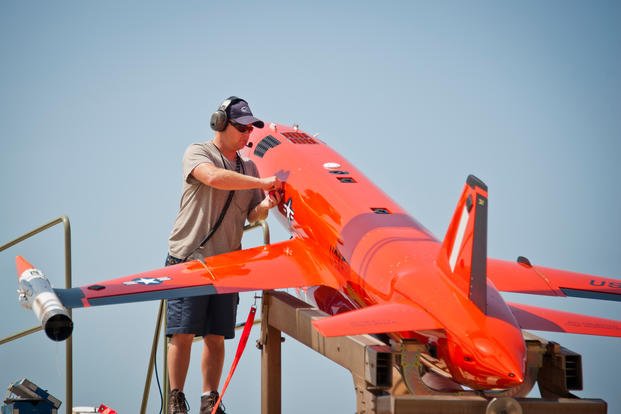An Air Force BQM-167A Skeeter aerial target drone made waves last week when it washed ashore in Boynton Beach, Florida. But service officials say they rarely lose track of these pricey high-tech targets.
The 53rd Wing, which oversees operational testing and evaluation at Eglin Air Force Base on Florida’s panhandle, uses an average of 140 BQM subscale drones per year for live-fire training, spokeswoman Capt. Savanah Bray said Monday.
Read Next: Billions in Upgrade Cost Overruns Put F-35 Fighter at Risk for Meeting Deadlines, Report Finds
“Very few BQM-167As -- just one to two a year -- are unable to be retrieved via one of those two methods, as was the case with the one that washed ashore on Friday,” Bray said in an email.
More than 60% of the flying targets are recovered using a parachute system; the 53rd has specialized boats to retrieve any drones that instead land in the water, she said.
The drone in question, which made its way to Ocean Ridge Hammock Park beach, belonged to Tyndall Air Force Base, also in Florida’s panhandle. The drone was recovered by local law enforcement and turned over to the service.
The target had been used for training in the Air Force’s ranges that span the coast of northwest Florida and the Gulf of Mexico. The service uses roughly 720 square miles on land and 123,000 square miles over open water to conduct training and operational testing for its equipment.
BQM target drones are often used for fighter jets to practice air-to-air shootdowns. Bray told Air Force Times on Friday that the BQM was shot down near the southern tip of Florida, meaning the drone likely took two to three months to wash up on the beach where it was discovered.
Sometimes drones use the targets, too: Last year, in a first, the MQ-9 Reaper drone shot a live air-to-air AIM-9X Block 2 missile at a BQM-167 drone, which simulated a cruise missile.
The Skeeter is capable of pulling 9 Gs of force while in flight and can reach a maximum speed of roughly 690 mph, according to the service.
Each drone is valued at $570,000 and can carry a variety of equipment such as infrared and radar pods, electronic attack pods and chaff-and-flare dispenser sets, the Air Force says.
The Air Force also may use the target drones for a smarter role in the near future.
In 2019, Will Roper, then-assistant secretary of the Air Force for Acquisition, Technology and Logistics, said the Air Force was evaluating a number of drones for an artificial intelligence "R2-D2" role, to be paired with a human piloting a fighter jet.
Roper said at the time that the Air Force Research Lab was experimenting with incorporating the AI system, known as Skyborg, within a BQM target drone variant; the XQ-58A Valkyrie, a long-range, high subsonic unmanned aerial vehicle; or a QF-16 converted unmanned fighter.
Kratos Unmanned Aerial Systems makes both the BQM drone and the XQ-58 Valkyrie. In December, Kratos was one of three defense companies chosen by the Air Force to produce unmanned aerial vehicle prototypes for the Skyborg program.
-- Oriana Pawlyk can be reached at oriana.pawlyk@military.com. Follow her on Twitter at @oriana0214.












